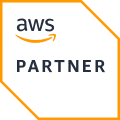Following the 2024 TSAM London and Funds Europe FundsTech conferences, FundGuard’s Antony Slee and Ravi Patel have gathered important insights shaping the conference attendees’ perspectives on the future of investment operations. Here are the most talked-about topics, followed by some practical considerations and strategic questions that firms can leverage on their paths to transformation. This blog covers:
One of the recurring themes at both TSAM and Funds Tech was the industry’s approach to cloud technology. Many discussions centered on migrating existing systems to the cloud rather than building true cloud-native solutions. While cloud migration offers certain benefits, it often fails to leverage the full potential of cloud technology.
Such debate brings up many old questions like, why do things multiple times, why pay for data multiple times, or why run processes multiple times? These questions all lead back to the same central issue — traditional operating models lack the efficiency and scalability to keep up with modern growth.
Yet, despite the setbacks that redundancy creates, many firms continue to push forward with the legacy mindset that typically opposes technological innovation.
Case in point, during a live survey at the FundsTech Forum, 96% of respondents indicated that technologists are underrepresented at the board level. A further 52% agreed that no significant innovation in fund management products or distribution had occurred since the launch of ETFs 25 years ago.
Additionally, while 47% of the FundsTech Forum attendees believed they had maintained momentum on tech-related projects, 27% reported a “drastic cut” to such initiatives.
These concerns over innovation and tech representation are valid as more and more money and resources continue to pour into the maintenance of outdated systems.
Why Start Fresh?
Migrating legacy systems can be a stopgap measure, often fraught with hidden costs and limited improvements in efficiency and scalability. In contrast, cloud-native solutions are designed to optimize performance, enhance security, and reduce total cost of ownership over time. Starting from scratch with a cloud-native approach can ensure that firms are not merely updating their technology but transforming it to meet future demands.
AI continues to be a hot topic, particularly concerning operational efficiencies. At the conferences, panelists discussed the potential of AI to streamline operations and reduce costs. However, many organizations are still in the early stages of AI adoption, with tangible use cases and large-scale deployment remaining elusive.
The Reality of AI Implementation
The promise of AI is immense, but its implementation requires careful planning and robust data management. Current operational inefficiencies and fragmented data sources can hinder AI’s effectiveness. It will be very difficult to accomplish true enterprise-wide AI by attempting to retrofit it on top of legacy platforms. With siloed legacy systems, you can’t capture the true power of AI because you don’t have the benefit of crowdsourcing across front, middle and back office workflows. This can only be achieved with fully cloud native systems that are one code-base and multi-tenant.
Also, there is still much regulatory uncertainty regarding the use of AI in investment decision-making and risk assessment processes. Many companies today are expressing a desire for more technology-friendly actions from regulators and greater overall tech literacy in regulation. In the earlier discussed FundsTech Forum survey, almost all attendees agreed that the UK’s Financial Conduct Authority (FCA) needs more technologists to better optimize regulations related to technology.
Clarification from regulators can help to pave a more straightforward path to solving operational inefficiencies with AI while also establishing best practices for ensuring successful implementation.
Speaking of regulators, the Digital Operational Resilience Act (DORA) was a critical topic of discussion. DORA mandates that financial institutions and their third-party ICT providers manage and mitigate operational risks. This regulation emphasizes the importance of not relying too heavily on a single provider or a small group of providers.
To comply with DORA, financial institutions are now challenged to adopt a distributed model that ensures resilience and reduces concentration risk. This could involve leveraging a distributed model to ensure that critical functions are not overly dependent on any single entity. FundGuard’s approach, which includes cloud-agnostic solutions and distributed technology, aligns well with these regulatory requirements, offering enhanced security and operational stability.
Driving technological change in asset management hinges profoundly on individuals within these organizations. At its core, this transformation depends on change agents with a keen understanding of technology and its potential applications in the financial sector.
Here are some practical considerations and actions to help create a culture of change:
The insights from TSAM and Funds Tech highlight the need for continuous innovation and strategic adaptation in the financial industry. By addressing the challenges of cloud migration, AI implementation, and regulatory compliance, firms can position themselves for success in an increasingly complex and competitive landscape.
At FundGuard, we are committed to help lead the industry’s path to transformation, offering solutions that not only meet today’s needs but also anticipate tomorrow’s challenges.
Are you ready to join the transformation? Let’s talk.
About the Author
100 Bishopsgate
18th Floor
London, EC2N 4AG, United Kingdom
Sign up for FundGuard Insights



Your use of information on this site is subject to the terms of our Legal Notice.
Please read our Privacy Policy.